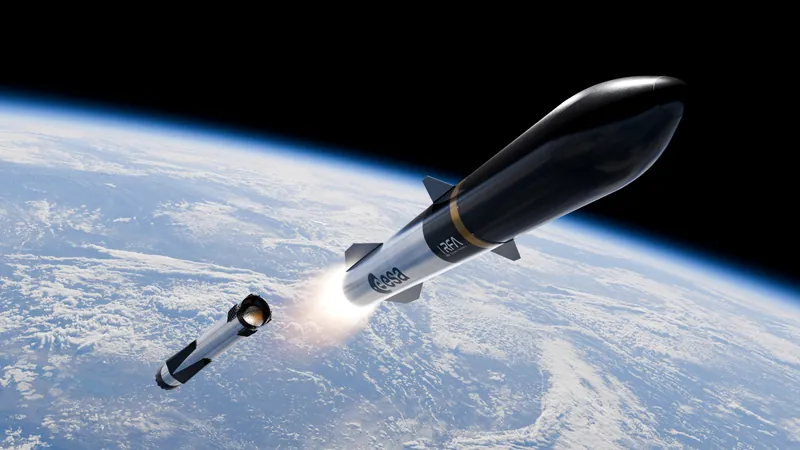
Europe on the Verge of a Space Revolution: Are Super Heavy-Lift Rockets Just Around the Corner?
2024-11-14
Author: Ling
Introduction
In a groundbreaking initiative, European companies have been invited to design innovative rockets capable of delivering monumental payloads into space while adhering to cost-effective and environmentally friendly practices. The urgency for such technology arises from ambitious projects proposed by the European Space Agency (ESA) which include the potential for solar electricity generators and vast data centers operating in the cosmos.
Selection of Key Players
After a rigorous selection process, ESA has chosen ArianeGroup and Rocket Factory Augsburg to further develop their bold rocket designs. This move could significantly elevate Europe’s positioning in the global space race by enhancing its launch capabilities.
Technical Feasibility and Infrastructure Requirements
A pivotal aspect of the ESA's Protein study was to evaluate not just the rocket's feasibility, but also the requisite ground infrastructure to support such high-stakes launches. It became clear that while the development of a super heavy-lift rocket within the next decade is theoretically feasible, achieving this goal would be no small feat. Technology advancements, extensive testing, and considerations surrounding staged combustion, funding, and legal frameworks are all component parts of this complex puzzle.
Requirements for Future Rockets
A prominent requirement for the future rockets is that they be at least semi-reusable, utilizing liquid fuels such as bio-methane and hydrogen produced from low-carbon electricity sources. This approach not only helps mitigate environmental impact but also ensures a more sustainable and cost-effective launch cadence—crucial for achieving lower costs per kilogram for payloads sent into orbit.
Logistical and Infrastructural Challenges
Furthermore, the design challenges extend beyond rocket engineering to encompass logistical and infrastructural considerations. For instance, rockets exceeding four meters in diameter pose considerable challenges for transportation across European roads, where highway and bridge dimensions often fail to accommodate their size. Additionally, fueling becomes a critical bottleneck in the logistics of rocket launches, highlighting the intricate planning required even before liftoff.
Current Capabilities and Future Prospects
One of the primary gaps identified in current European capability is the lack of high-thrust staged-combustion engines, which are essential for delivering the necessary power. ESA is actively working on this frontier through its 'Thrust!' project, in conjunction with efforts from ArianeGroup's Prometheus and Rocket Factory Augsburg’s Helix projects.
Conclusion
Currently, Europe maintains autonomous access to space through the Ariane 6 and Vega-C rockets, joining the elite ranks of just three other countries globally. But the pressing question remains: can Europe scale up access to space for significantly lower costs? The Protein studies suggest that it's indeed a possibility, awaiting the political will to turn these visionary plans into reality. As Europe stands on the brink of an exciting new era of space exploration, the next steps are crucial in making the dream of frequent, heavy-lift space flights a reality. Stay tuned as we follow the developments in this thrilling story—could this be the dawn of a new space age for Europe?




 Brasil (PT)
Brasil (PT)
 Canada (EN)
Canada (EN)
 Chile (ES)
Chile (ES)
 España (ES)
España (ES)
 France (FR)
France (FR)
 Hong Kong (EN)
Hong Kong (EN)
 Italia (IT)
Italia (IT)
 日本 (JA)
日本 (JA)
 Magyarország (HU)
Magyarország (HU)
 Norge (NO)
Norge (NO)
 Polska (PL)
Polska (PL)
 Schweiz (DE)
Schweiz (DE)
 Singapore (EN)
Singapore (EN)
 Sverige (SV)
Sverige (SV)
 Suomi (FI)
Suomi (FI)
 Türkiye (TR)
Türkiye (TR)